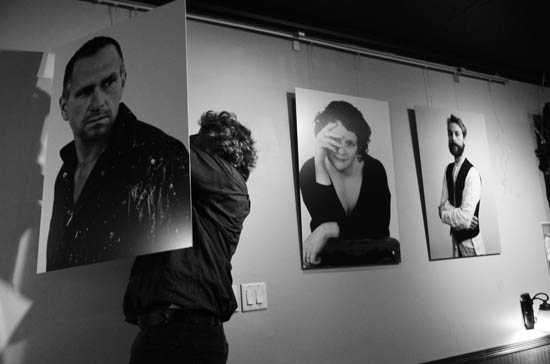Hanif Janmohamed, artist. Taken June 18, 2012.
Photography, being a relatively recent art, is always understood in terms of something else.
Most famously, William Henry Fox Talbot's The Pencil of Nature (1844) saw photography as a kind of automatic drawing done by nature in concert with the sun. What was remarkable about it was the lack of human agency. The composition (within the frame) and the execution were the result of light and the photographic process itself. One can read the history of art photography from that point onward as an uneasy tension between, on the one hand, the lack of human agency in photography, and on the other, a need to locate and celebrate an "artistic" intention in photography in order to claim territory in the dubious and evanescent landscape of the arts.
It is also possible to understand "the pencil of nature", where the act of creation is not drawing, but rather writing.
Driving to Horseshoe Bay recently, I was listening to the 2007 CBC Massey Lecture, "The City of Words" by Alberto Manguel. As I drove through the snow that was almost rain, I heard descriptions of the craft and interpretation of writing. These I chose to deliberately misunderstand as being about photography. Consider the following passage, as being not about the short story, but rather, about a photo:
"It states facts, but gives no definite answers, declares no absolute postulates, demands no unarguable assumptions, offers no labelling identities."
We may see a photo - especially a portrait - and grant it a state as "true" or "untrue" insofar as it matches what we think of the subject. But there is nothing in the photo itself that can be validated one way or the other.
I write this because, as I enter the third year of this portrait project, I find myself a little suspicious of my ability to say who these people are in words. The goal at the beginning and the end is always the photo. Yet I find myself in an uneasy relationship with the text on these pages as I try to say who the subject is - or at least, how the photo took place.
Hanif Janmohamed has a considerable range of interests. You can find some of his design portfolio here: http://www.creativite.com





























